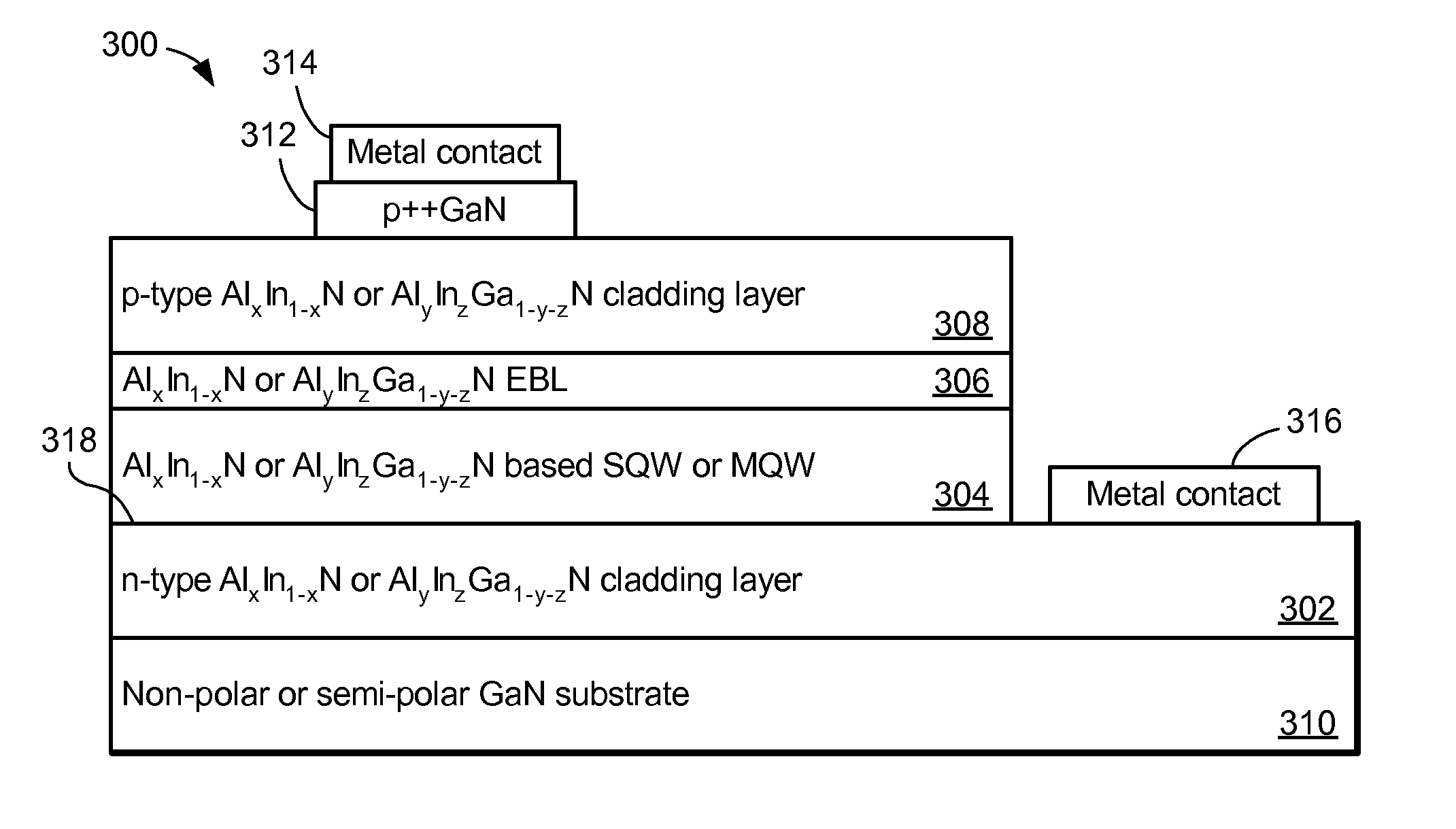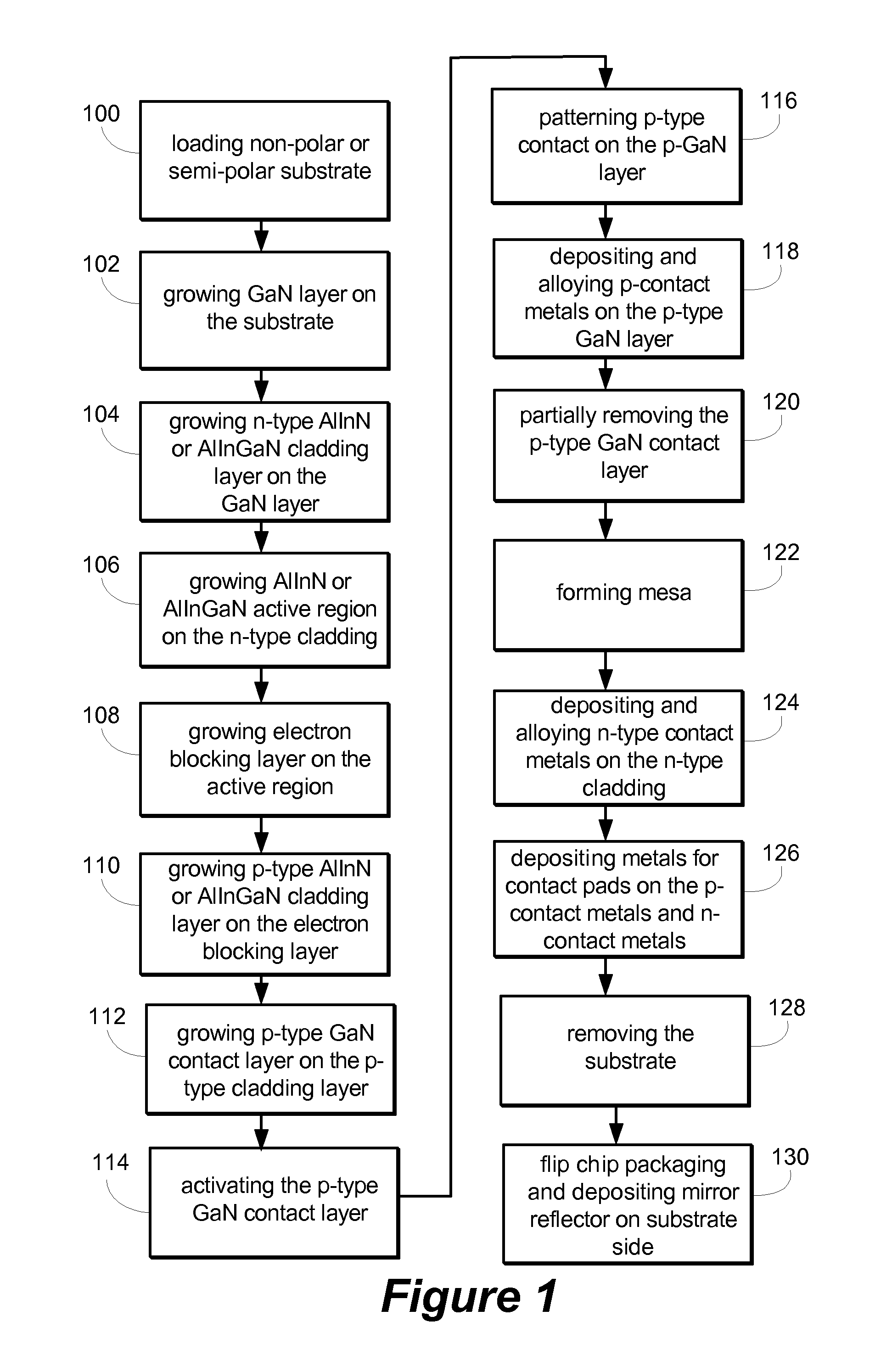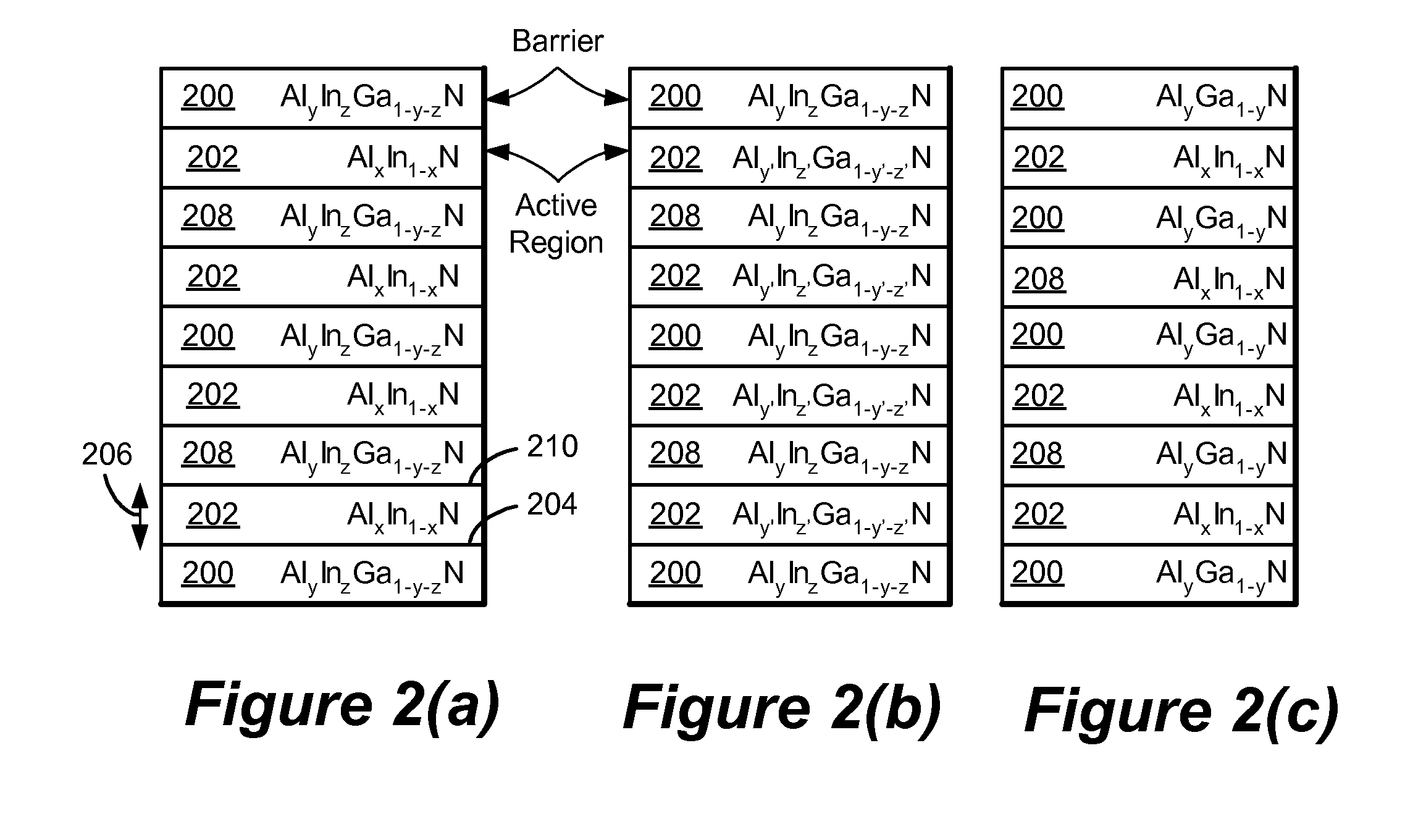Optoelectronic device based on non-polar and semi-polar aluminum indium nitride and aluminum indium gallium nitride alloys
a technology of aluminum indium nitride and optoelectronic devices, which is applied in semiconductor devices, lasers, semiconductor lasers, etc., can solve the problems of low material quality, low power and high-efficiency leds and lds in the deep uv (duv) region of the spectrum, and not been achieved
- Summary
- Abstract
- Description
- Claims
- Application Information
AI Technical Summary
Benefits of technology
Problems solved by technology
Method used
Image
Examples
Embodiment Construction
[0027]In the following description of the preferred embodiment, reference is made to the accompanying drawings which form a part hereof, and in which is shown by way of illustration a specific embodiment in which the invention may be practiced. It is to be understood that other embodiments may be utilized and structural changes may be made without departing from the scope of the present invention.
[0028]Overview
[0029]The present invention describes a device structure that can be utilized for a high-power and high-efficiency LED and LD, in the wavelength ranging from 280 nm to 360 nm, using non-polar or semi-polar AlInN and AlInGaN grown on non-polar or semi-polar GaN. The salient feature of the structure is that the piezoelectric field is reduced, because AlInN and AlInGaN cladding layers can be closely lattice-matched to GaN. In the new structure, the spontaneous polarization is also minimized by growing in non-polar or semi-polar crystal orientations. With the relatively wide bandg...
PUM
 Login to View More
Login to View More Abstract
Description
Claims
Application Information
 Login to View More
Login to View More - R&D
- Intellectual Property
- Life Sciences
- Materials
- Tech Scout
- Unparalleled Data Quality
- Higher Quality Content
- 60% Fewer Hallucinations
Browse by: Latest US Patents, China's latest patents, Technical Efficacy Thesaurus, Application Domain, Technology Topic, Popular Technical Reports.
© 2025 PatSnap. All rights reserved.Legal|Privacy policy|Modern Slavery Act Transparency Statement|Sitemap|About US| Contact US: help@patsnap.com



